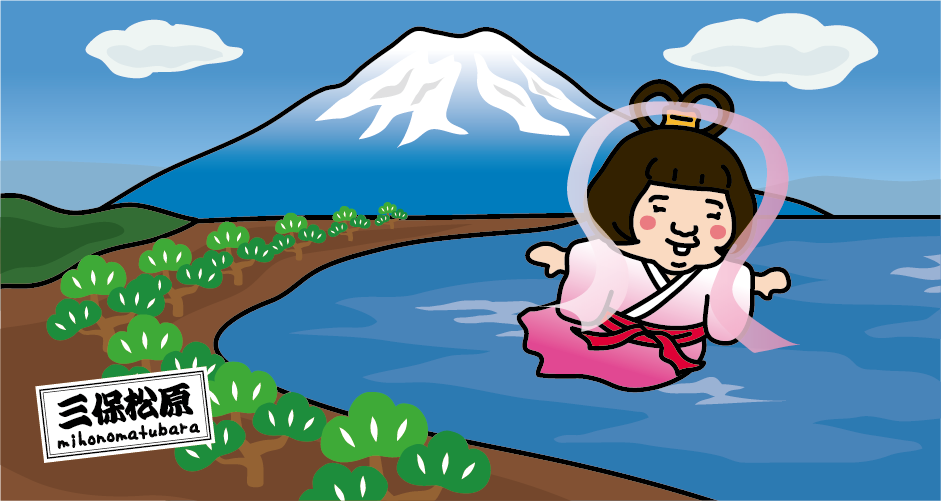The Takigi Noh performed at Miho no Matsubara Pine Grove was actually a performing arts festival honoring French women!? Take a stroll through Miho no Matsubara Pine Grove while admiring the beautiful Mt. Fuji.
Miho no Matsubara Pine Grove is a scenic spot on the east side of the Miho Peninsula in Shizuoka City, Shizuoka Prefecture. The 7km stretch of the beach, which is covered with 50,000 pine forests, and the beautiful scenery of Mt. Fuji overlooking Suruga Bay, has been written in many waka poems and haiku poems since the Heian period (end8th – 12th centuries), and has also been depicted in ukiyo-e prints during the Edo period (17th – mid19th centuries).
In 1922, it was designated as Japan’s first national scenic spot along with Amanohashidate in Kyoto Prefecture. Along with Onuma Park in Hokkaido and Yabakei Gorge in Oita Prefecture, it has been selected as one of the New Three Views of Japan., and along with Fukui Prefecture‘s Kehi no Matsubara Pine Grove and Saga Prefecture‘s Niji no Matsubara Pine Grove, it has been selected as one of Japan’s three major pine groves. In 2013, Miho no Matsubara Pine Grove was registered as one of the constituent assets of UNESCO’s World Cultural Heritage “Mt. Fuji”.
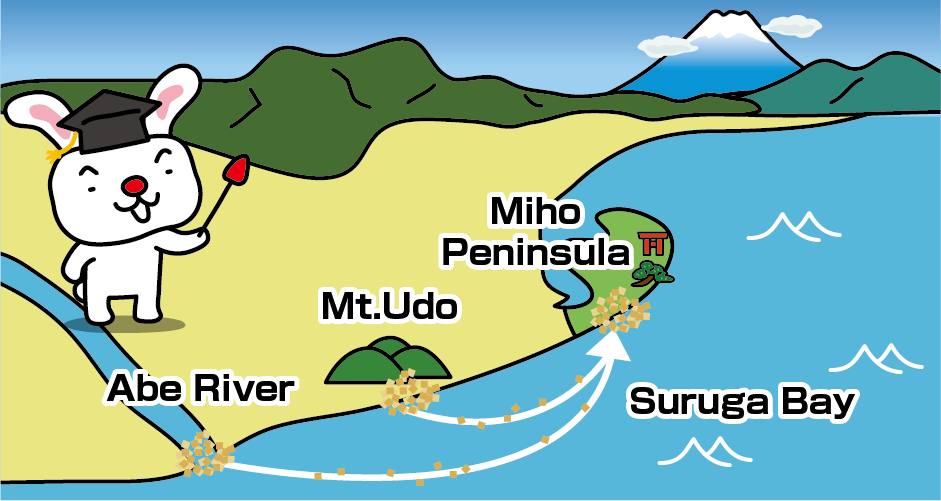
The Miho Peninsula is a sandbar (spit) formed by sediment that flowed out to the sea from the Abe River and sediment eroded from Mt. Udo facing Suruga Bay, carried by the coastal current.
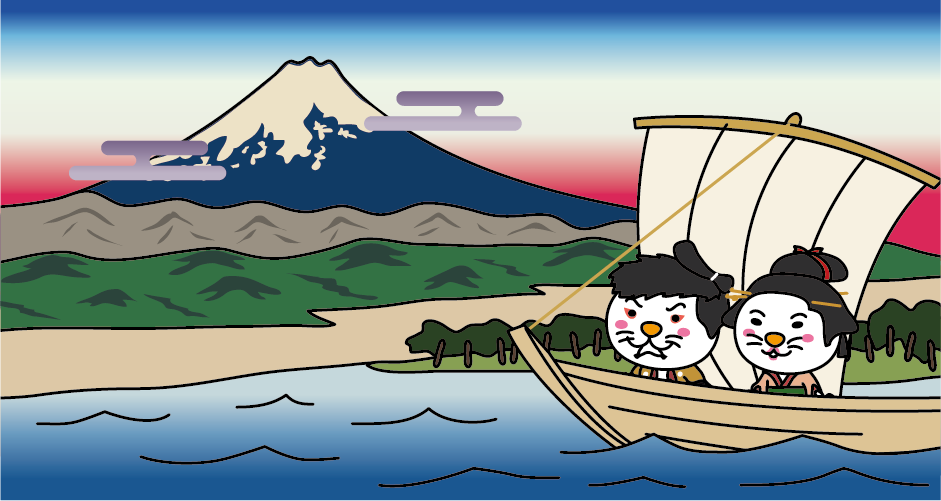
In the Edo period (17th – mid19th centuries), Miho no Matsubara was completely land, but the roads were not maintained, so visitors to Miho Shrine had to cross by boat.

In Miho no Matsubara Pine Grove, there is a legend (“Hagoromo legend”) that a celestial maiden descended down to the ground. There are many “Hagoromo legends” in various parts of Japan, but the “Hagoromo legend” of Miho no Matsubara is particularly famous because of the Noh play “Hagoromo” by Zeami, a Noh performer in the Muromachi period (15th century).
One spring morning, when Hakuryo, a fisherman living in Miho no Matsubara, went fishing, he found a beautiful robe hanging from a pine branch. When he tried to take it home, a celestial maiden appeared and begged him to return the robe of feathers. At first, Hakuryo did not listen and did not return the robe, but he decided to return her robe in exchange for being shown the celestial maiden’s dance. The celestial maiden in her robe of feathers, continued to dance in praise over the Miho no Matsubara Pine Grove in spring, and eventually she soared to the heights of Mt. Fuji and disappeared into the sky.
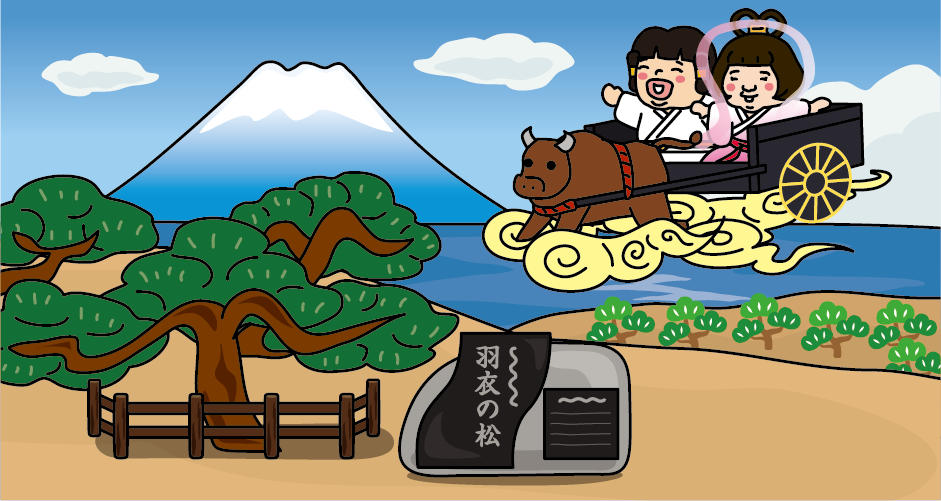
In one corner of Miho no Matsubara Pine Grove, there is a 200-year-old old pine tree called “Hagoromo no Matsu”. “Hagoromo no Matsu” is the object of worship of Miho Shrine, and is said to be a “Yorishiro” when the enshrined deities, Mihotsuhiko-no-mikoto (Okuninushi-no-mikoto) and Mihotsu-hime-no-mikoto descend. “Yorishiro” is an object that a Divine Spirits (deities) possesses, the current “Hagoromo no Matsu” is the third generation. It is said that the first “Hagoromo no Matsu” sank into the sea during the 1707 eruption of Mt. Fuji. The second “Hagoromo no Matsu” was a large old pine that was 650 years old, but it was dying out, so, in 2010, it was replaced by the third generation. Nearby there is an approach to Miho Shrine called “Kami no Michi (the way gods walks)”, which is lined with 500m of pine trees.
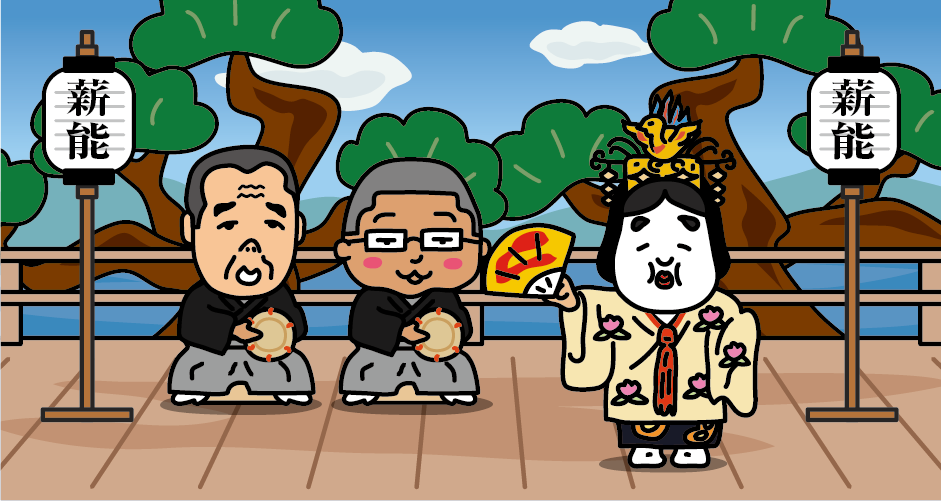
At the “Hagoromo Festival” held every October at Miho no Matsubara, a special stage is set up to perform Takigi-Noh (a wood-burning Noh play.)
The “Hagoromo Festival” is an event to honor the achievements of Mrs Elene Giuglaris (1916-1951), a French dancer who was fascinated by the “Legend of Hagoromo” and who introduced the traditional Japanese performing art of Noh to France shortly after World War II.
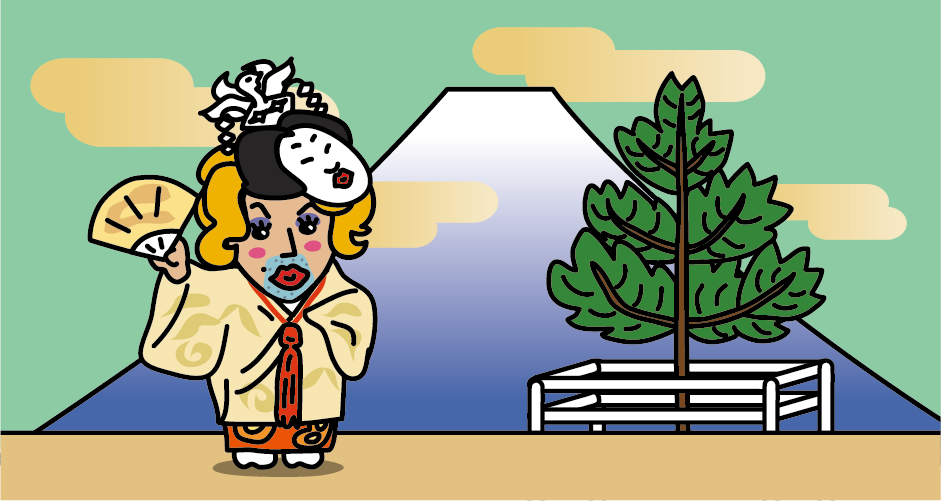
In France at the time, there were few materials about Noh, and it was extremely difficult to study on her own. While working hard to create costumes and find musical instruments, she formed her own troupe, and in 1949, performed her own original dance “HAGOROMO” in France. The premiere was a success, but three months later, during the performance, she collapsed on stage and was taken to the hospital while still wearing a celestial maiden costume. she had leukemia. And two years later, at the young age of 35, she died.
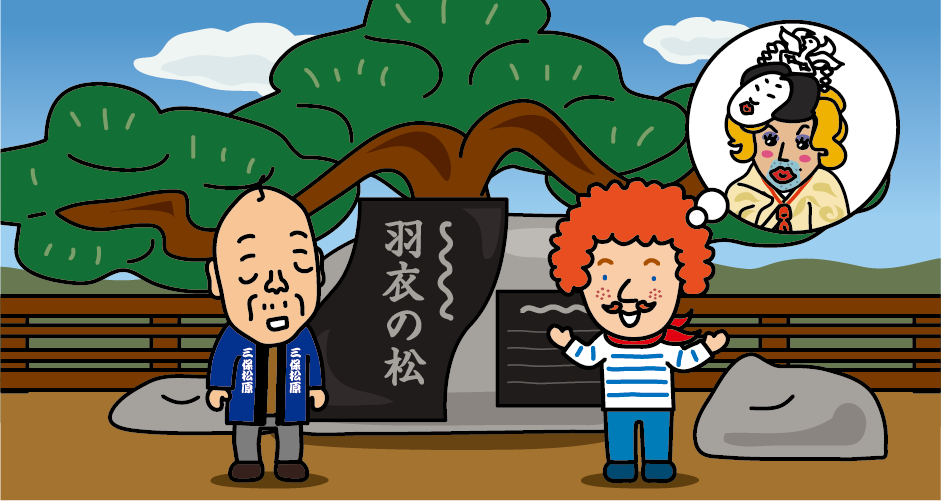
In 1951, her husband, Mr Marcel Giuglaris, visited Miho no Matsubara with the hair of Mrs Elene and the dance costumes she had made. And he told how much Mrs Elene loved “Hagoromo”. The people of Miho no Matsubara were so moved that they built the Elene Monument (Hagoromo Monument) near the Hagoromo no Matsu.
Access to Miho Matsubara
From Tokyo
It takes about 1 hour and 20 minutes from JR Tokyo Station to JR Shizuoka Station by Tokaido Shinkansen.
From Osaka
It takes about 1 hour and 50 minutes from JR Shin-Osaka Station to JR Shizuoka Station by Tokaido Shinkansen.
Transfer to JR Tokaido Main Line at JR Shizuoka Station and get to JR Shimizu Station in about 10 minutes. Get off at JR Shimizu Station and from Shimizu-ekimae bus stop, it takes about 30 minutes by route bus to Miho Matsubara Iriguchi bus stop. Approximately 15 minute-walk from Miho Matsubara Iriguchi bus stop or approximately 5 minute-walk from World Heritage Miho Matsubara bus stop (operated only on weekends and holidays).
